Boeing say they have successfully completed the first flight of the F-15QA fighter, the most advanced version of the jet ever manufactured.
Developed for the Qatar Emiri Air Force (QEAF), the jet demonstrated its capabilities during its 90-minute mission. The flight took off and landed from Lambert International Airport in St. Louis, say the firm.
“We are very proud of this accomplishment and looking forward with great excitement to the continued successes of this program,” said Col. Ahmed Al Mansoori, commander, QEAF F-15 Wing.
“This successful first flight is an important milestone that brings our squadrons one step closer to flying this incredible aircraft over the skies of Qatar.”
Boeing describe the jet on the website:
“The F-15QA brings to its operators next-generation technologies such as fly-by-wire flight controls, digital cockpit; modernized sensors, radar, and electronic warfare capabilities; and the world’s fastest mission computer. Increases in reliability, sustainability and maintainability allow defense operators to affordably remain ahead of current and evolving threats.”
According to Boeing, the aircraft demonstrated its maneuverability during its near-vertical takeoff and by pulling nine Gs, or nine times the force of earth’s gravity, in its subsequent maneuvering in the test airspace. Checks of systems such as avionics and radar were also successful.
“This successful first flight is an important step in providing the QEAF an aircraft with best-in-class range and payload,” said Prat Kumar, Boeing vice president and F-15 program manager.
“The advanced F-15QA not only offers game changing capabilities but is also built using advanced manufacturing processes which make the jet more efficient to manufacture.”
The U.S. Department of Defense awarded Boeing a $6.2 billion contract in 2017 to manufacture 36 F-15 fighter jets for the QEAF.
Boeing will begin delivering aircraft to the customer in 2021. Future plans call for as many as 144 aircraft.



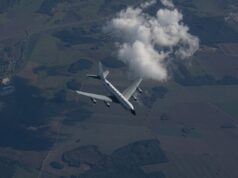
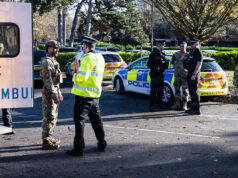

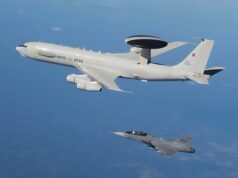
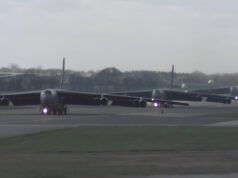

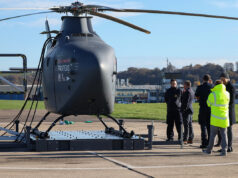
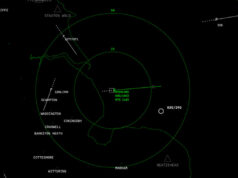
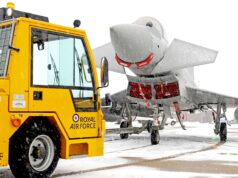
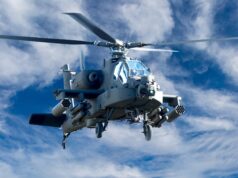

The Legend Returns!
What a partner Qatar is, sustaining both Eurofighter (24) and Rafale (24) production and now this regeneration of the F-15 (36).
The Eurofighter order was signed 3 months after they were blockaded by Saudi and banned from the air and sea space of 9 other countries. The order might have massively cut in to the slightly earlier Rafale order which was originally 72 jets and subsequently downgraded to 24.
Presumably they can be counted on for 24 Tempest as well.
Isn’t the point of this Eagle or the Typhoon that you only need one of them as they are so multirole?
Not these ones, these purchases also include diplomatic and military cover from 3 nuclear-armed permanent UN Security Council members.
These purchases (and others) stopped Qatar being invaded by their neighbors without a single flight hour being flown.
Although the F15 is an excellent fighter with an unprecedented kill ratio, it is still a 70’s child, so the aerodynamics of the latest offerings have not evolved. The F15QA/SA are based on the later F15E model. The only upgrade to the aerodynamics was done on the Silent Eagle prototype, which was only the canting of the twin fins out by 15 degrees, for a lower RCS. It’s as if Boeing just want to do the minimum to produce or re-badge a product. Even the F15EX is still the same airframe used on the C model, but now fitted with the E’s wing. This includes fly by wire actuators rather than hydraulic. It does however, double up the effective number of weapons that can be carried at any one time.
The aircraft is a beast though, due to its power to weight ratio. The EX will be powered by GE’s tried and trusted F110-129 engines as used on the E, SA and QA versions. However, it is still a 4th generation aircraft, with very benign handling, unlike today’s unstable aircraft. For example in a tail chase the F15 will bleed off a lot of speed in a very tight turn, whereas a Typhoon can turn inside an F15, as it can maintain its speed better and then come round onto its tail. The close coupled canard and delta wing is a big reason for this, but so is the unstable nature of the Typhoon, as it’s more responsive.
The latest F15 version should be looked on much like the Tornado F3s as a bomber interceptor, rather than a pure day one interceptor. It will struggle if it comes up against a Su57 or J20, purely because they will see it, before it can see them due to its significantly larger RCS, much like the Su30 series. However, the plans for the EX are to be a loyal wingman for a F22 or F35 and act as a mobile weapons magazine. In the air to air mode, the EX can carry at least 16 air to air missiles, most probably AMRAAAM D’s. This is what I don’t get. The aircraft will need to operate quite a way behind a F15, as the engine intakes give a very good head-on radar view of the engines. This will eat into the effective range of the AMRAAM, even though the are supposed to have a range of 100km plus. Although it can carry more, I don’t think the F35/F15EX combination will be as good as a F35/Typhoon combination mostly due to the Meteor missile. It has a significant range and terminal energy advantage over AMRAAM. I know the US Air National Guard are desperate to replace their F15 C/Ds due to their limited lifespan and the EX seems like a quick fix. But will is be any better than what they have already? Granted it will have updated electronics and have the capability of carrying more. But realistically it is a retrograde step.
“The F-15QA brings to its operators next-generation technologies such as fly-by-wire flight controls”
Fly by wire controls in fighter aircraft started coming in from the 60’s onwards….
“next-generation technologies such as fly-by-wire flight controls, digital cockpit; modernized sensors, radar, and electronic warfare capabilities”
It all sounds very much current/last generation to me…